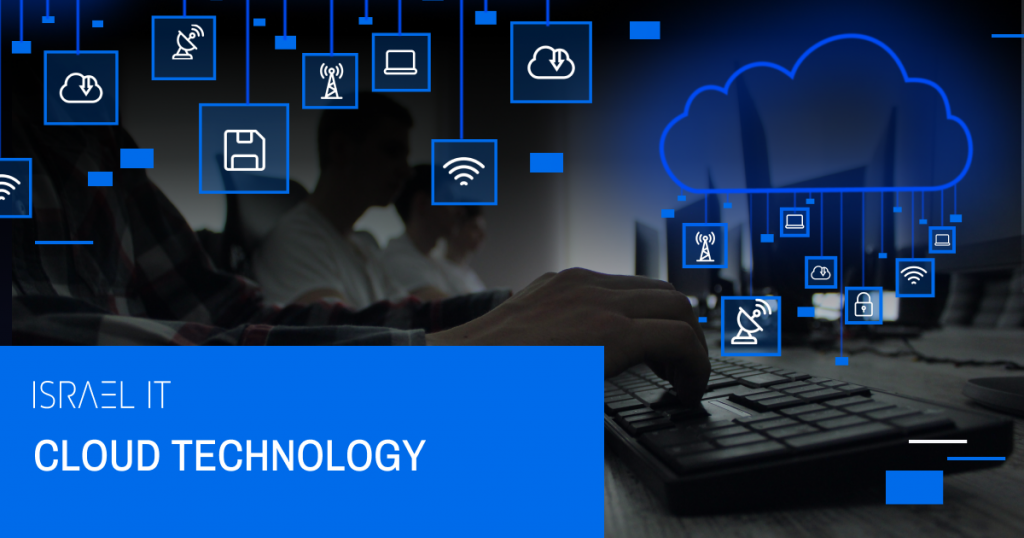Do you remember, how we used to store our data on a hard disk drive and get annoyed when the computer ran out of space? Well, that was actually not that long ago. Luckily, we’ve got Cloud Computing – one of the breakthrough technology of the 21st century.
So what is it? There are a lot of definitions on the internet and in books. Simply saying, it is a virtual storage where you can keep all your data. It is accessible anywhere and anytime, provided that you have an internet connection. Cloud computing is a relatively new technology. We can call it “distributed computing” since it allows you to run a program on different devices. If your PC breaks down, you can access the information in the Cloud from another one.
Types of Cloud Services
- Software as a service (SaaS). This is the most popular Cloud model. It supports a wide range of business functions: automation, customer management, business analytics, etc. SaaS provides convenient browser-based software applications. It eliminates the need for IT specialists, time-consuming set-ups, and maintenance. Customers typically pay only for the time of using a certain application from the Cloud. Google Drive, Gmail & Yahoo email services are common SaaS companies examples.
- Infrastructure as a Service (IaaS). This model offers on-demand services such as servers, computer infrastructure, storage recourses, and network equipment. IaaS allows users to scale and shrink recourses according to their needs. It works quite similarly to traditional computer hardware, but virtually. IaaS allows businesses to move data from on-premises or collocated data centers to the Cloud, where it is owned and managed by a Cloud provider. These are the examples of IaaS companies: DigitalOcean, Amazon Web Services (AWS), Microsoft Azure, etc.
- Platform as a service (PaaS) includes computing resources, servers, storage, and networking as previous models. In addition, you receive a set of applications, such as the operating system, development tools, intermediate-level software, and others. This model supports the entire web application lifecycle: building, testing, managing, deploying, and updating. PaaS provider’s infrastructure hosts the hardware and software. Common companies examples are AWS Elastic Beanstalk, Google App Engine, OpenShift, etc.
Cloud services can be supplied via public, private, and hybrid solutions. All three offer a set of benefits over traditional on-premises IT environments: cost-efficiency, consistent high performance, reliability, and scalability on demand. The choice of these solutions depends on factors such as type of workload, security requirements, finance, and the level of in-house IT expertise.
Public Cloud is provided by a third-party vendor. It offers all the required resources for running the infrastructure, including servers, network, storage, etc. With such a wide range of options, you don’t have to spend thousands on buying, managing, and maintaining your PC and application infrastructure. Public Cloud providers are responsible for all system management and maintenance. As a customer, you can purchase and consume the Public Cloud services in a way that best suits your needs. It is a cross-functional model. This means you can share infrastructure with other companies and have your data and workloads kept in a separate and secure virtual environment.
Private Cloud is also known as internal. It is the environment where the hardware and software are dedicated to a single company. Private Cloud is a highly flexible and virtualized platform that can be hosted by a third-party service provider or in your own data center. The main feature is that the IT resources are managed and maintained on a private network only for your use. Public Cloud is tailored to meet specific business and security needs. Usually, organizations choose this model when their workloads involve confidential documents, intellectual property, personally identifiable information (PII), medical records, financial info, and other sensitive data.
Hybrid Cloud is getting more and more popular around businesses, as it combines the advantages of both – Public and Private Clouds. It gives flexibility, better resource control, and a high level of security. The key feature of a Hybrid Cloud is that the entire Cloud infrastructure functions as a single system under general centralized control. This model helps companies to achieve their technical and business objectives more effectively and cost-efficiently than the other two models.
Why do you need Cloud?
We live in the age of rising cyber threats, which makes it necessary for businesses to adopt Cloud Computing. There are a lot of benefits of Cloud, one of which, according to the statistics, is an increased efficiency. These are the ways Cloud is driving Business Efficiency:
- Flexibility. The business landscape is constantly evolving, regardless of the field, you work in. It’s critical to stay on top of the current trends and make timely adjustments when necessary. Many companies are left behind when they make these adjustments too late. This often happens due to some technical problems. You can have more flexibility with Cloud computing than you do with physical solutions. PC is broken down? It’s okay, access your data from another device. Having access to data from any device is a great option for businesses, as employees can work from any part of the world.
- Collaboration. Employee collaboration is critical for corporate efficiency and productivity. Cloud computing solutions make it easier for team members to work more effectively. Employees have access to everything they need whether they work from home or in the office.
- Security. Many businesses had their data and information compromised as a result of security breaches or attacks. To protect data, Cloud computing makes servers and storage more secure by establishing different levels of protection, building robust intrusion detection, and performing security audits regularly in their data centers. Cloud computing models are rapidly improving, so users no longer have to worry about data loss or theft.
- Automatic updates. The cloud service provider is responsible for managing infrastructure (servers, storage, software, network, bandwidth, and so on). That means, your employees can be assigned to do other work and forget about monitoring the IT department. Cloud companies have teams of professionals who ensure the continuity of service. Depending on the service provider, your system will get the latest updates regularly. It may be newer versions of software or upgrades to servers and computer processing power.
- Expandable storage and cost-efficiency. Cloud eliminates the need of purchasing new hardware, building and managing an in-house IT infrastructure. You won’t have to spend money upgrading hardware or purchasing software licenses for a short time because the cloud service provider is responsible for supplying infrastructure and provisioning resources to meet the company’s demands. Furthermore, Cloud storage is expanding constantly as you add up more data to it.




